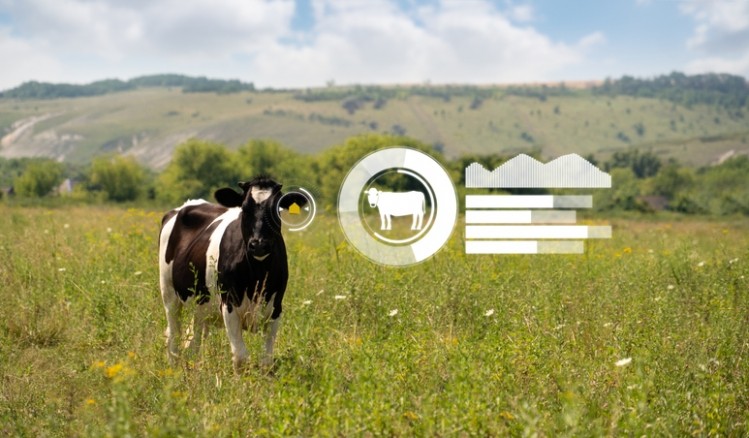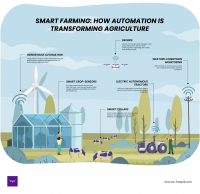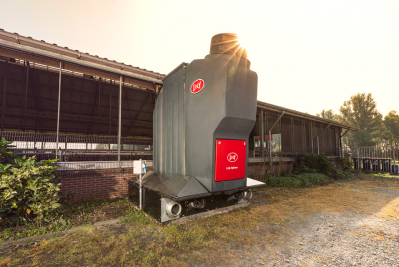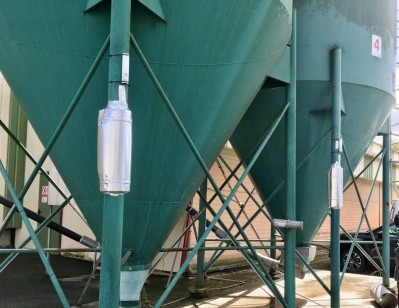Doing more with the same or fewer resources: Does smart farming also mean smart feeding?

Farm automation or smart farming refers to the application of data and information technology to optimize both the quality of the produce and the overall production processes of complex farming systems.
The prospects for the smart ag sector are good: it is expected to grow at an 11.4% compound annual growth rate (CAGR) between 2019 and 2027, as per market analyst reports.
“The agriculture industry is facing a number of challenges these days, and these challenges call for a solution. As technologies advance, the adoption of automation solutions is becoming a widespread phenomenon — and farms are no exception.
“The goal is thus not to just produce more food, but to also adjust food production processes in a way that is more sustainable and better for the environment. This means that the food is expected to be grown without the currently-used amounts of water, land, fertilizer, and pesticides,” reads the Danish technology company's report.
Francois Lienard, communications manager for the Internet of Food and Farm 2020 project, said reducing the environmental footprint of the global agricultural system comes down to doing more with the same or even fewer resources. And this is where farm automation comes in, according to the guide.
Drones, AI and IoT technologies
Using a wide range of technologies — such as drones, the Internet of Things (IoT), robotics, AI, automation, mapping, geomatics, and so forth — the practice of farm automation can be applied to a wide range of farming processes, noted the report.
Some of the most common ways in which farm automation is used are:
- Weather conditions monitoring
- Crop management
- Livestock monitoring
- Soil quality monitoring
- Greenhouse automation
- End-to-end smart farm management
Smart feeding
Smart feeding is part of this. And it is an essential element of precision livestock farming, said Michelle Schlechtriem, editor of the report.
“Precision livestock farming monitors or objectively measures individual animals with the use of signal analysis algorithms as well as statistical analysis.
“With the help of new technologies driven by the IoT, farmers can now easily keep track of each animal’s age, pedigree, reproduction, health, growth, feed conversion, meat quality, and so on. It also helps detect potential infections, diseases, aggression, and can measure feed and water intake," she continued.
Smart feeding helps to achieve improved feed intake, which positively affects animal health, production, fertility as well as a farmer’s finances, she added.
Schlechtriem outlined the three basic principles of smart feeding:
Customizing rations for each group
“It is of great importance to differentiate between different animal groups. For example, a lactating cow is in need of different nutrients compared to young stock or dry cows.
“To achieve the best results, it is essential to calculate the specific ration for each group. This is where smart feeding — or automatic feeding — makes it possible to easily load, mix, and distribute different batches for different animal groups.”
Ensuring precise loading of the rations
The feed components that are used for rations need to be weighed very precisely in order to accurately feed the animals according to their unique needs and requirements, she said.
“With the help of the IoT and smart software, automated feeding systems allow farmers to load the correct weight of each feed component, thereby ensuring well-constructed rations.”
Enabling frequent and fresh feeding
Frequent feeding leads to more stable pH levels as well as good health in the rumen. It is essential for cows to have stable pH levels to ensure effective intake of fatty acids, which are responsible for more than half of the cow’s energy requirements, said the editor.
“By providing cows with more frequent, smaller meals each day, pH levels are kept stable, allowing the cows to feed more efficiently.
“According to Lely, in an ideal scenario, cows even need 10 to 14 smaller meals a day in order to maintain stable pH levels.”
Tags to track feeding
She also highlighted how, in one example of a smart farming application, 2,200 dairy cows across six farms in Germany, Denmark, Lithuania, and Latvia were provided with ear tags that had a built-in wireless radio frequency identification antenna.
“This antenna was connected to a smart robotic feeder and could detect exactly when a cow would stick its head into the feeder, how long it would feed during each visit, and what exact dose of mineral feed supplement the cow would take in.
“With the help of these smart tags, farmers are able to spot which cows are not eating enough. Moreover, as the feeder is connected to a cloud-based system, farmers can automatically adjust the types and amount of supplements, accordingly, thereby optimizing the cow’s nutrient intake and overall health.”















